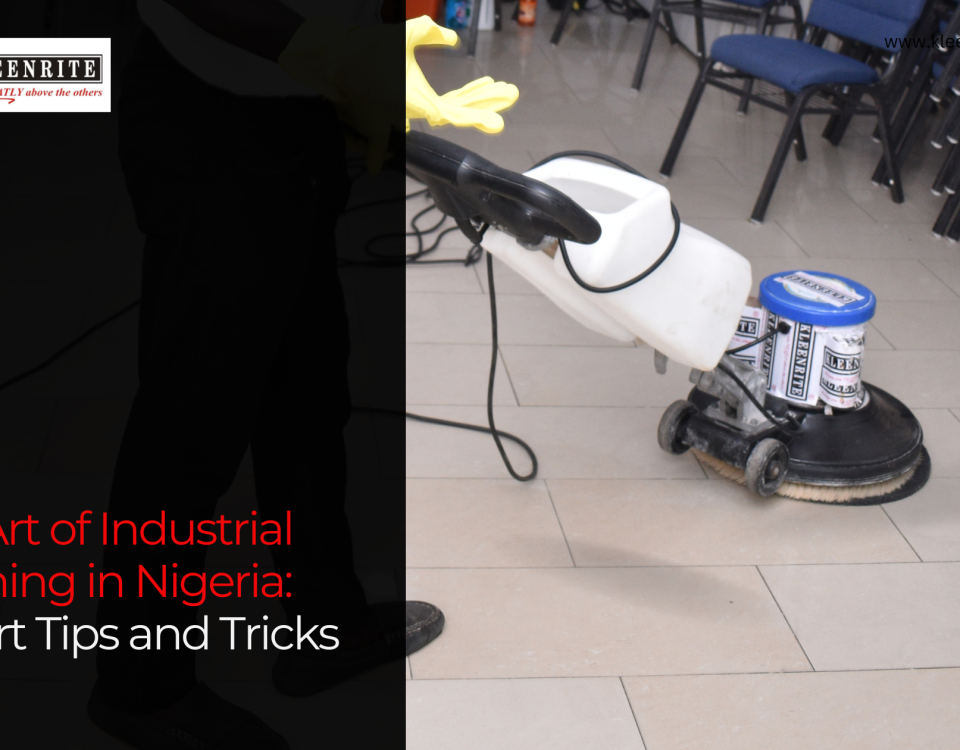5 Things That Makes A Good Professional Cleaning Service Company
January 13, 201910 Common Professional Cleaning Tools And Their Specific Functions
March 12, 2019Why should you even bother about precautionary measures for safe cleaning? Because your life depends on it!
It is a general belief that health is wealth, while some people might want to argue this. We will eventually come to a point where we establish that it is nearly impossible to enjoy wealth when the organs of the human body aren’t functioning properly.
And cleanliness is one of the several factors that promote healthy living. However, cleaning is carried out in different ways, with every individual having a different motivation for maintaining a clean environment.
As you already know, at Kleenrite, we ensure that our clients have a clean environment to work and live, leaving you with germs free environment.
5 Precautionary Measures for Safe Cleaning Experience
Our article today bothers on the precautionary measures you should take while cleaning. We are sharing these tips with you because you deserve a safe cleaning experience, and you might just be saving a life with this info!
-
ALWAYS USE NOSE COVER/MASK
Nose mask or nose cover as it’s often called in local parlance is arguably the most used cleaning tool. It’s one of the effective precautionary measures for safe cleaning experiences.
Studies have shown that the mouth and nose are the fastest way by which we can be infected. The nose mask prevents infection that arises from the inhaling of toxic chemicals and contaminated air.
You would recall that during the outbreak of the Ebola virus, the use of nose marks and hand sanitizer was very common, even made compulsory for primary and secondary schools.
-
USE SAFETY GLOVES & SHOES
Another precautionary measure for safe cleaning is wearing safety gloves and shoes. What the gloves, clothes and shoes do basically is to protect the skin from infestation.
While cleaning, should you experience some form of spillage, wearing a safety shoe can protect the legs, gloves and cloth protect the hand and body respectively.
It’s possible to get cut by a sharp object especially when doing post construction cleaning; these tools will help to reduce the effect of the cut and could even prevent it.
-
AVOID NAKED ELECTRIC CABLES
Electric shocks can be experienced when cleaning. This usually occurs when a naked electric cable reacts against wet surfaces. As a result, avoiding naked electric cables is one of the highly recommended precautionary measures for safe cleaning.
Knowing that water is a major component used for cleaning, you should take steps to check the electronics. See that the cables are not exposed as you could experience electric shock if water comes in contact with a live-wire.
Switching off the electric socket is another option you might want to consider given that it might be a daunting task to check the cables one after the other. So just simply turning off the electronic gadget from the power socket would be the better option.
It is possible that you have an electronically powered device for cleaning, do well to check if it is safe taking into account some of the precautionary measures for safe cleaning mentioned here.
-
EMPTY THE POCKETS
This precautionary measure for safe cleaning is specific to laundry, probably one of the first things you will learn about washing clothes. It is essential that you remove anything that is remaining in the pockets.
Objects like keys, razor blades should be removed to prevent any injuries; even papers should be removed before dipping the cloths into the water for washing.
Not all papers are useless, so you don’t want to accidentally damage a confidential document.
-
RINSE YOUR HANDS WITH CLEAN WATER AFTER WASHING
Even after the completion of a cleaning exercise, you should ensure that your hands are properly rinsed with clean water.
Water helps you to remove other chemicals that could react with the hand. Hitching of the hands and peeling of the hands have been attributed to the use of low quality soap. It’s safe to add that you should make sure the soap you are using is not high in sulfates.
The sulfate chemicals are used to produce lather and bubbles in soap. Some common sulfates are SLS (sodium lauryl sulfate) and SLES (sodium laureth sulfate). Sulfates rid the skin of its natural oils thereby increasing penetration of the skin’s surface. People with eczema and sensitive skin get easily irritated.
If you feel irritated on your skin after using soap, do well to wash with clean water and change the soap, the soap could have this harmful toxin.
ACTION POINT
This article has been able to help expose you to some precautionary measures for safe cleaning experience.
In few words, we mentioned the use of nose cover/mask, avoiding naked or exposed cables while cleaning as some of the precautionary measures for safe cleaning.
We would also like to hear from you, tell us what your precautionary cleaning measures are, and please use the comment box below to send your comments.

